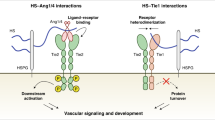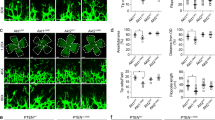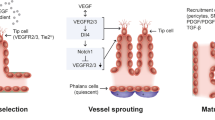Abstract
Aim:
The angiopoietin-1 (Ang1)/Tie-2 signaling system not only plays a pivotal role in vessel growth, remodeling, and maturation, but also reduces apoptosis of endothelial cells, neurons, and cardiomyocytes. However, relatively little is known as to whether Ang1 has a protective effect on mesenchymal stem cells (MSC). The aim of the present study was to investigate the protective effect of Ang1/Tie-2 signaling on MSC against serum deprivation and hypoxia-induced apoptosis, and to determine the possible mechanisms.
Methods:
Hoechst 33342 and terminal deoxynucleotidyl transferase-mediated digoxigenin-dUTP nick-end labeling staining were used to assess the apoptosis of MSC. The expression of Tie-2, Akt, Bcl-2, Bax, and cleaved caspase-9 and -3 was detected by Western blot analysis.
Results:
This study showed that MSC expressed Tie-2 receptor, and Ang1 induced Tie-2 receptor phosphorylation. The protective effect of Ang1 on MSC was dose-dependent and peaked at 50 μg/L; however, the soluble Tie-2/Fc fusion protein, which acts as an inhibitor by sequestering Ang1, abrogated the anti-apoptotic effect. Ang1 induced Akt phosphorylation, increased the Bcl-2/Bax ratio, and decreased the activation of caspase-9 and -3. All these effects were attenuated by Tie-2/Fc and a phosphatidylinositol 3 kinase (PI3K) inhibitor, wortmannin.
Conclusion:
These results demonstrate that Ang1 can protect MSC against serum deprivation and hypoxia-induced apoptosis; Ang1/Tie-2 signaling and its downstream PI3K/Akt messenger pathway are crucial in the processes leading to MSC survival.
Similar content being viewed by others
Article PDF
References
Pittenger MF, Mackay AM, Beck SC, Jaiswal RK, Douglas R, Mosca JD, et al. Multilineage potential of adult human mesenchymal stem cells. Science 1999; 284: 143–7.
Orlic D, Kajstura J, Chimenti S, Jakoniuk I, Anderson SM, Li B, et al. Bone marrow cells regenerate infarcted myocardium. Nature 2001; 410: 701–5.
Wollert KC, Meyer GP, Lotz J, Ringes-Lichtenberg S, Lippolt P, Breidenbach C, et al. Intracoronary autologous bone-marrow cell transfer after myocardial infarction: the BOOST randomised controlled clinical trial. Lancet 2004; 364: 141–8.
Tomita S, Li RK, Weisel RD, Mickle DA, Kim EJ, Sakai T, et al. Autologous transplantation of bone marrow cells improves damaged heart function. Circulation 1999; 100: II247–56.
Hu X, Wang J, Chen J, Luo R, He A, Xie X, et al. Optimal temporal delivery of bone marrow mesenchymal stem cells in rats with myocardial infarction. Eur J Cardiothorac Surg 2007; 31: 438–43.
Wang JA, Fan YQ, Li CL, He H, Sun Y, Lv BJ . Human bone marrow-derived mesenchymal stem cells transplanted into damaged rabbit heart to improve heart function. J Zhejiang Univ Sci B 2005; 6: 242–8.
Wang JA, Li CL, Fan YQ, He H, Sun Y . Allograftic bone marrow-derived mesenchymal stem cells transplanted into heart infarcted model of rabbit to renovate infarcted heart. J Zhejiang Univ Sci 2004; 5: 1279–85.
Kolossov E, Bostani T, Roell W, Breitbach M, Pillekamp F, Nygren JM, et al. Engraftment of engineered ES cell-derived cardiomyocytes but not BM cells restores contractile function to the infarcted myocardium. J Exp Med 2006; 203: 2315–27.
Lunde K, Solheim S, Aakhus S, Arnesen H, Abdelnoor M, Egeland T, et al. Intracoronary injection of mononuclear bone marrow cells in acute myocardial infarction. N Engl J Med 2006; 355: 1199–209.
Toma C, Pittenger MF, Cahill KS, Byrne BJ, Kessler PD . Human mesenchymal stem cells differentiate to a cardiomyocyte phe-notype in the adult murine heart. Circulation 2002; 105: 93–8.
Zhang M, Methot D, Poppa V, Fujio Y, Walsh K, Murry CE . Cardiomyocyte grafting for cardiac repair: graft cell death and anti-death strategies. J Mol Cell Cardiol 2001; 33: 907–21.
Davis S, Aldrich TH, Jones PF, Acheson A, Compton DL, Jain V, et al. Isolation of angiopoietin-1, a ligand for the TIE2 receptor, by secretion-trap expression cloning. Cell 1996; 87: 1161–9.
Dumont DJ, Yamaguchi TP, Conlon RA, Rossant J, Breitman ML . Tek, a novel tyrosine kinase gene located on mouse chromosome 4, is expressed in endothelial cells and their presumptive precursors. Oncogene 1992; 7: 1471–80.
Maisonpierre PC, Goldfarb M, Yancopoulos GD, Gao G . Distinct rat genes with related profiles of expression define a TIE receptor tyrosine kinase family. Oncogene 1993; 8: 1631–7.
Thurston G . Role of angiopoietins and Tie receptor tyrosine kinases in angiogenesis and lymphangiogenesis. Cell Tissue Res 2003; 314: 61–8.
Papapetropoulos A, Garcia-Cardena G, Dengler TJ, Maisonpierre PC, Yancopoulos GD, Sessa WC . Direct actions of angiopoietin-1 on human endothelium: evidence for network stabilization, cell survival, and interaction with other angiogenic growth factors. Lab Invest 1999; 79: 213–23.
Kwak HJ, So JN, Lee SJ, Kim I, Koh GY . Angiopoietin-1 is an apoptosis survival factor for endothelial cells. FEBS Lett 1999; 448: 249–53.
Valable S, Bellail A, Lesne S, Liot G, Mackenzie ET, Vivien D, et al. Angiopoietin-1-induced PI3-kinase activation prevents neuronal apoptosis. FASEB J 2003; 17: 443–5.
Hashiramoto A, Sakai C, Yoshida K, Tsumiyama K, Miura Y, Shiozawa K, et al. Angiopoietin 1 directly induces destruction of the rheumatoid joint by cooperative, but independent, signaling via ERK/MAPK and phosphatidylinositol 3-kinase/Akt. Arthritis Rheum 2007; 56: 2170–9.
Wang Z, Cui M, Sun L, Jia Z, Bai Y, Ma K, et al. Angiopoietin-1 protects H9c2 cells from H2O2-induced apoptosis through AKT signaling. Biochem Biophys Res Commun 2007; 359: 685–90.
Xie XJ, Wang JA, Cao J, Zhang X . Differentiation of bone marrow mesenchymal stem cells induced by myocardial medium under hypoxic conditions. Acta Pharmacol Sin 2006; 27: 1153–8.
Zhu W, Chen J, Cong X, Hu S, Chen X . Hypoxia and serum deprivation-induced apoptosis in mesenchymal stem cells. Stem Cells 2006; 24: 416–25.
Perin EC, Geng YJ, Willerson JT . Adult stem cell therapy in perspective. Circulation 2003; 107: 935–8.
Tang YL, Tang Y, Zhang YC, Qian K, Shen L, Phillips MI . Improved graft mesenchymal stem cell survival in ischemic heart with a hypoxia-regulated heme oxygenase-1 vector. J Am Coll Cardiol 2005; 46: 1339–50.
Jiang S, Haider H, Idris NM, Salim A, Ashraf M . Supportive interaction between cell survival signaling and angiocompetent factors enhances donor cell survival and promotes angiomyogenesis for cardiac repair. Circ Res 2006; 99: 776–84.
Mangi AA, Noiseux N, Kong D, He H, Rezvani M, Ingwall JS, et al. Mesenchymal stem cells modified with Akt prevent remodeling and restore performance of infarcted hearts. Nat Med 2003; 9: 1195–201.
Kaiser J . Clinical research. Death prompts a review of gene therapy vector. Science 2007; 317: 580.
Kaiser J . Gene therapy. Side effects sideline hemophilia trial. Science 2004; 304: 1423–5.
Kim I, Kim HG, So JN, Kim JH, Kwak HJ, Koh GY . Angiopoietin-1 regulates endothelial cell survival through the phosphatidylinositol 3′-kinase/Akt signal transduction pathway. Circ Res 2000; 86: 24–9.
Fayard E, Tintignac LA, Baudry A, Hemmings BA . Protein kinase B/Akt at a glance. J Cell Sci 2005; 118: 5675–8.
Ashkenazi A, Dixit VM . Death receptors: signaling and modulation. Science 1998; 281: 1305–8.
Green DR, Reed JC . Mitochondria and apoptosis. Science 1998; 281: 1309–12.
Gross A, Jockel J, Wei MC, Korsmeyer SJ . Enforced dimerization of BAX results in its translocation, mitochondrial dysfunction and apoptosis. EMBO J 1998; 17: 3878–85.
Oltvai ZN, Milliman CL, Korsmeyer SJ . Bcl-2 heterodimerizes in vivo with a conserved homolog, Bax, that accelerates programmed cell death. Cell 1993; 74: 609–19.
Yang E, Korsmeyer SJ . Molecular thanatopsis: a discourse on the BCL2 family and cell death. Blood 1996; 88: 386–401.
Lakhani SA, Masud A, Kuida K, Porter GA Jr, Booth CJ, Mehal WZ, et al. Caspases 3 and 7: key mediators of mitochondrial events of apoptosis. Science 2006; 311: 847–51.
Author information
Authors and Affiliations
Corresponding author
Additional information
Project supported by the National Natural Science Foundation of China (No 30670868) and the Natural Science Foundation of Zhejiang Province (No R206007).
Rights and permissions
About this article
Cite this article
Liu, Xb., Jiang, J., Gui, C. et al. Angiopoietin-1 protects mesenchymal stem cells against serum deprivation and hypoxia-induced apoptosis through the PI3K/Akt pathway. Acta Pharmacol Sin 29, 815–822 (2008). https://doi.org/10.1111/j.1745-7254.2008.00811.x
Received:
Accepted:
Issue Date:
DOI: https://doi.org/10.1111/j.1745-7254.2008.00811.x
Keywords
This article is cited by
-
Mitochondria in Mesenchymal Stem Cells: Key to Fate Determination and Therapeutic Potential
Stem Cell Reviews and Reports (2024)
-
Effects of advanced glycation end products (AGEs) on the differentiation potential of primary stem cells: a systematic review
Stem Cell Research & Therapy (2023)
-
Iron depletion with deferoxamine protects bone marrow-derived mesenchymal stem cells against oxidative stress-induced apoptosis
Cell Stress and Chaperones (2020)
-
Transplantation of Umbilical Cord-Derived Mesenchymal Stem Cells Overexpressing Lipocalin 2 Ameliorates Ischemia-Induced Injury and Reduces Apoptotic Death in a Rat Acute Myocardial Infarction Model
Stem Cell Reviews and Reports (2020)
-
Human amniotic mesenchymal stem cells and their paracrine factors promote wound healing by inhibiting heat stress-induced skin cell apoptosis and enhancing their proliferation through activating PI3K/AKT signaling pathway
Stem Cell Research & Therapy (2019)



